The Raitt name
Throughout the Scottish Parish BMD registers the name Raitt is variously found as: Reat, Reatt, Raait, Rait, Raitt. The word Rait itself is said to be Gaelic for fort, probably deriving from an early Picto-Celtic word for a defensive structure or stockade, namely Rath. Indeed, in the Place Names of Scotland by James Johnston and published in 1892, we find:
RAIT (Errol). G. rath, a fort, rampart. Cf. Logierait.
RAITH (Kirkcaldy). c. 1320, Rathe ; as above. Cf. Raithby, England, and O.Ir. raith, fern, bracken.
RATHELPIE (St Andrews). 1183, Rathelpin. Fort (G. rath) of King Alpin.' Of. PITALPIN.
RATHEN (Lonmay). a. 1300, Rathyn. Prob. G. rathain, 'ferny place,' O.Ir. raith, fern.
RATHMURIEL (Garioch). 'Muriel's fort.'
RATHO (S. Queensferry). 1250, Ratheu; 1292, Radchou; 1293, Rathou ; 1316, -oe. G. rath, a fort ; second syllable doubtful. Cf. STOBO.
RATHVEN (Buckie). G. rath bheinn, ' fort on the hill.'
RATTRA (Borgue) and RATTRAY (Blairgowrie). Perth. 'fort town,'
LOGIERAIT (Ballinluig). c. 1200, Rate, Rath. G. lagan raith, 'little hollow with the fort, rampart,' or 'circle.'
----------
However, in Jamieson’s Dictionary of the Scottish Language published in 1846, while there is not an entry for Rait, there are entries for:
RAITH, Reath, s. The fourth part of a year, S. Ross. - Gael, ratha, raithe
RAITH, Rath, adj. Sudden; quick. 2. Ready 3. Rather, primarily, sooner
RAlTH .adv. Quickly
RAT, s. 1. A scratch, S. 2. Metaph. A wrinkle. 3. A rut; cart-rat
To RAT, Ratt, v. a. 1. To scratch, S. 2. To make deep ruts,
RATE, Ratt, Ratte - A line or file of soldiers.
To RATE, v. a. To beat, to flog
RATH ,adj. Strange ; savage in appearance.
RATH, adj. Quick..
Some of these words derive from Gaelic, Anglo-Saxon, Scots, Danish
and German words and are often specific to a locality.
----------
Edward Dwelly's Illustrated Gaelic Dictionary published in 1902 gives:
rath (obsolete), s.m Fortress. 2 Artificial mound or barrow. 3 Village, town. 4 Royal seat. 5 Fern. 6 Plain, cleared spot. 7. Residence (Highland Society's Gaelic Dictionary.)
rath, -a, g.m. Prosperity, fortune, success, increase, profit, advantage, good luck. 2 (AF) Shoal. 3 Surety. 4 Character. 5 Wages. .........
----------
In the Place Names of Elginshire by D. Matheson and published in 1905, there is the following entry under the parish of Cromdale: “Rait, anciently Rate, and found as Raith, Ra, Rah, and Ray, and in Latin it is found as Atrium, and applied to a circular mound or entrenchment thrown up to protect the enclosed residences. In Gaelic we have the three words Lios, Rath, and Dim, having a similar signification.”
While in The place names of Fife and Kinross by W.J.N. Liddall, published in 1896, although Rait is not mentioned, there are the following entries:
Raith. The Raithe. The "wread," or place for confining cattle in winter. See under Riras for the origin of the term.
Rires. Riras, Rerays {schira de). A comparison of this name with such names as Rywrayis, Bulwrayis in Renfrew, and Wrae or Wraith in various districts, points out as the explanation of the latter part of the name the old Scottish word Wread or Wreath, signifying a small enclosure for confining cattle or for growing crops. The "reed" is still the name in Fife for the court where cattle are enclosed in winter. The term appears in Old Norse in such words as naep- nareitr, a place for growing turnips. Rerays signifies enclosures for growing rye. The root idea is tying up or enclosing ; in Gothic vrithus means a herd. See Raith.
----------
The book Celtic Place-Names in Aberdeenshire by John Milne and published in 1912 provides additional detail:
Raiths. Small circle. Rathan, small circle of stones. An had been regarded as the plural termination, and s had been affixed to raith improperly.
Raittshill (for Coill Rathain). Hill of the small circle. Coill, hill; rathain, gen. of rathan, small fold, stone circle round a grave. The name had been in succession Coill Rathain, Coill Raths, Raths Choill, Raits Hoil, Raittshill. Ain had been changed to s instead of ie. The meaning having been lost the parts of the name had been transposed, and Coill had been aspirated, subsequently becoming Hoil and Hill.
Rath. Circle, stones round a grave, cattle-fold, fank, pigsty, ditch, and dyke round a farm-steading. In Ireland Rath in names indicates a place where the dwelling-houses and property of a hamlet are surrounded by a dyke or wall which could be closed at night. Th is usually silent, and Rath may become Rae, Rait, Ray, Ree, Reive, Rieve, Rie, Ry, Wrae, Wray.
Rathen. Small circle, fold, stones round a grave. Rathen, dim. of rath, circle. It assumes the forms Rathen, Raitts, Rayne.
Ratlich (for Rath Leac). Stone circle. Rath, circle; leac, gen. plural of leac, stone.
Rattray (for Rathrath). Circle. The second part is the oldest, and after it had become Ray, Rath had been prefixed to explain it. Rathray is now Rattray. See Rath. The circle had been a cattle-fold.
----------
Another definition or explanation is provided in the earlier book Glimpses of Church and Social Life in the Highlands in Olden Times by Alexander MacPherson and published in 1893.
RAITTS (Gaelic, Rýt, signifying a stone circle. The term Rýt -- in the older form RÚth -- was applied to places set apart for Druidical rites, or for the purposes of religious worship. Hence glebe lands are to this day termed, in Gaelic, Rýth mhinisteir -- i.e., the minister's land or portion).
In Scotland the Stone Circle was also used at times as a Law Court, and in the Chartulary of Moray a regality court was held by Alexander Stewart, Lord of Badenoch and son of King Robert II at the Standing Stones of Raitts, stating "apud le standard stanes de la Rath de Kinguey."
----------
Further etymology is provided by Francis C. Diack in the Revue Celtique, vol xxxix, 1922, under Place-Names of Pictland:
Ràtadh-mhòin, Rothiemoon (I., Abernethy, rayj-vô:n ; ràth, rath, fort, gives with the -d suffix (see later) ràt, obl. ràit, in historical spelling ràthd-, ràithd; ràtadh abstract, then concrete, 'fortification'; mòin, 'moss'. Ràt, Ràit, Ràtadh are widely spread, especially in central and east Pictland. Thus: Ràt, Raitt(s) (I., Badenoch); Ràtadh-muhurchais, Rothiemurcus (I., p.) rayt-vuRuyïf in Strathspey, rayp-v. in Badenoch where final -adh is kept ; murchais obscure to me; Ràit-mhill, Rotmel (P., Dunkeld), mhill gen. of meall, lump; Ràit-chnuic, Raitknock (N.) cnoc, hillock ; also Rothiemay (B.), Rothiebrisbane (A.) and many others in the north-eastern lowlands.
----------
In the account of the campaigns of Montrose we hear of Alexander (Mac-Colla) MacDonald in July 1644 marching to Caol Reate (also referred to as Caol Reithe - in the south-west Highlands) and thence over the mountains to Glengary and then Badenoch.
----------
On the other hand, the authority, Cosmo Innes, in his book Concerning some Scotch Surnames published in 1860, simply states: Rait - derived from a Scotch place name.
----------
However, there is a most interesting Preface to book entitled The Thanage of Fermartyn: including the district commonly called Formartine, its proprietors, with genealogical deductions; its parishes, ministers, churches, churchyards, antiquities, &c. by the Rev. William Temple and published by D. Wyllie & Son in 1894. Paraphrasing slightly, it states:
“The territory now known as Aberdeenshire and Banffshire was in old times the seat of the Taixali and other Celtic tribes, and at the end of the sixth century formed part of the northern Picts. The country was divided among tribes, over which there was probably an Ardrigh or under King, and the royal and tribal officials, a Mormaer or great Steward acting for the King, and the Toisech ruling over a tribe and under the Mormaer. The Mormaer represented the Crown in the district over which he presided, accounted to the Ardrigh or King for his rents and dues, and was over the whole tribes of the district, while the Toisech was over a tribe, and was their captain to lead them to battle. The land was first possessed by the tribe or community before it came into possession of individuals. The word Tuath signified a family, and came to be applied to the district occupied by the tribe, and in some records it is equivalent to a barony. Tuath was the possession of the tribe and the land comprised arable and common pasture, while waste land separated one Tuath from another. The Tuath was divided into homesteads, to each of which belonged as much land as was required for the subsistence of a family. These were called Raths, which enter largely into the place names of the district, as Rait, Raitshill near Tolquhon, Rothie, Rothmaise, &c., &c. These Raths, according to the Brehon laws, to be legally constituted required a dwelling-house, an ox stall, a hog-sty, a sheep pen, and a calf house, and they were all surrounded by a ditch or rampart, with wooden pallisades for protection. There were various kinds of Raths. The Fine-Rath was the homestead occupied by the original kindred, Mar-Rath that occupied by the stranger tenants, and Jar-Raths occupied by the stranger serfs on the chiefs' demesnes lands and others.”
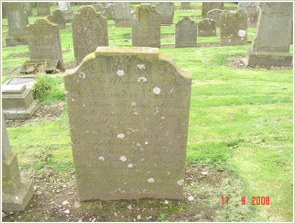
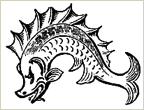
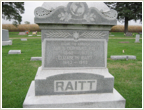
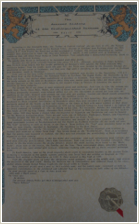
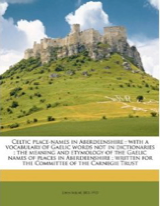
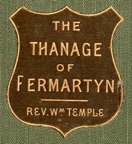
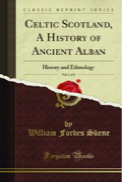
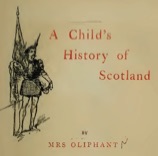
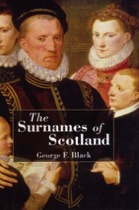

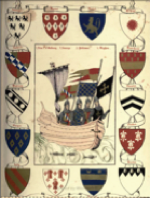
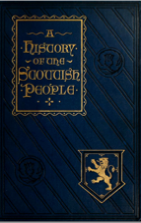
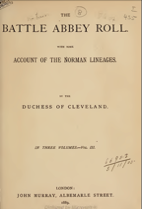

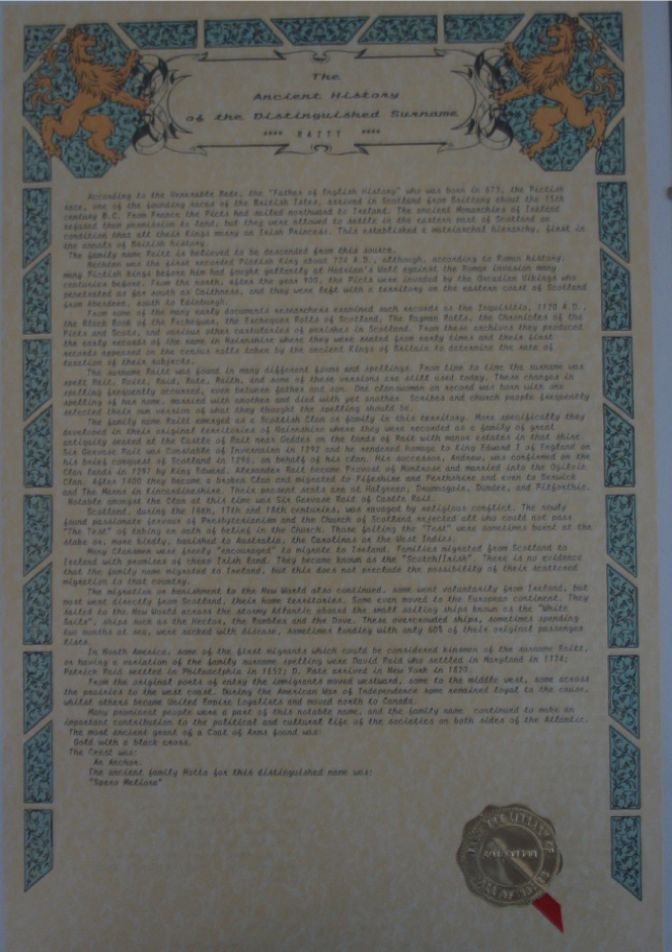
The now ruined Battle Abbey, in the small town of Battle in Sussex, England, was built on the scene of the Battle of Hastings in 1066 where William the Conqueror and his Norman knights defeated King Harold. The famous Roll of Battle Abbey is believed to have been compiled in obedience to a clause in the Conqueror's foundation charter, that enjoined the monks to pray for the souls of those "who by their labour and valour had helped to win the kingdom." It was most likely copied from the muster-roll of the Norman knights, that had been prepared by the Duke’s order before his embarkation and was called over in his presence on the field of battle, the morning after it had been fought.
In the “Battle Abbey Roll with some account of the Norman lineages” complied by the Duchess of Cleveland and published by John Murray in three volumes in 1889, in volume 3 there is mention of the Raits.
The following is taken from the Battle Abbey Roll.
Rait. Jordan de Raat held in Lincolnshire temp. Henry III.—Testa de Nevill. The name is of considerable antiquity in Scotland. Among the documents preserved in the Exchequer Office is the Submission and Fealty of Sir Gervays de Rate, given at Elgin, July 27th, 1295. Their principal seat was at Hall Green, in the shire of Kincardine, where the older parts of the castle still show their armorial bearings. "The first Rait, according to Nisbett, took refuge in the Mearns during the 14th century, having had to leave his native district of Nairnshire for some capital crime. It is certain that Raits were settled in the Mearns, and held the lands of Owres or Uras at that period; but it was not until the close of the following century that they had any connection with Hall Green. From that time, till the year 1724, they were possessed of it; and from them all the Raits of any note in Angus and the Mearns, whether landholders, ministers, farmers, or merchants, claim to be descended. The last Laird of Hall Green died in 1724, and his lands, burdened by mortgages, were sold by order of the Court of Sessions." —Andrew Jervise. Thomas Raite, Lord of Owres, received a confirmation charter of half the lands of Arroch, in the barony of Brechin, from Robert II. in 1378 : and David Rait of Drumnagair had Hall Green confirmed to him by a similar charter from James III. in 1478.
I have discussed the Battle Abbey Roll and the name of Jordan de Raat appearing in it quite extensively on the Raitt context page.
-----------
The following is taken from the Families of Scotland by Sir George Mackenzie
The original manuscript version of the Families of Scotland, now lost, was written by Sir Patrick Lyon of Carse about 1672, the same year that Sir George Mackenzie of Rosehaugh wrote The Science of Heraldry. Mackenzie added considerably to Lyon’s work over his remaining years, but none of his updated versions were ever published – though many contemporary copies were made. In fact, there seems to have been some 30 versions of the manuscript (22 being extant) – though, with all their texts clearly coming from the same single original source, none of the texts were identical. They detail 167 families whose armorial and genealogical details were included therein.
A version of Mackenzie’s manuscript dated about 1687 was transcribed by the Scottish Record Society in 2008. Besides giving the relevant blazon, cadet lines and genealogical information, the SRS transcript of the manuscript includes an introduction, editorial footnotes and a glossary.
The manuscript predates the genealogical data published some fifty years later in 1722 by Alexander Nisbet (which many more recent sources quote) and shows the extent of knowledge of the histories and families of noble and landed families in Scotland in the latter part of the 17th century (not a great deal for many). One of the 167 families included in the original old manuscript is that of Rait or Rhet and the text is given below with the original punctuation and spellings, (complete with variations of the name) and notes added in the transcript.
Rait or Rhet. beareth or, a cross engraild sable. the chief is Rait of Halgreen in the Shire of Kincardine. he is said to be descended of a german who from the country of Rhetia whence he came was calld Rait who in the days of King Malcolm 2d came to Scotland with Keith predecessor to the Earle of Marshall, and gott some lands in the Shire of Nairn where he built a castle and calld it from his own name. his posterity is said to have remaned there severall ages till the reign of King Robert 3d, in whose days Sir Archibald Rhet of that ilk for the slaughter of the Thane of Cadell was forced to fly from that country and live in the Mernis the remainder of his time under the shelter of the Lord Keith predecessor to the Earle of Marshall. he purchast the lands of Drumgen in the Mernis. his son Mark Rhet married the heretrix of Halgreen then called Donante and gott by her these lands. Since which tyme the succession has been thus, 1st Mark Rait before mentioned who after the death of his first wife w[ith]out issue marryd […..] Ogilvy dawghter to Ogilvy of that ilk. 2d David who married [……] Murray a brother dawghter to Tullybarden. 3 William who married [……] Seaton (391) dawghter to Sir Alex[ande]r Seaton of that ilk. 4 David who married [……] Gairn (392) dawghter to David Gairn of Brachtello. 5th William who married […….] Lundy dawghter to the Laird of Benholm. he was slain at Pinky. 6 William who married [……] Gardin dawghter to the Laird of Leys garden. 7 David who married [Jean] Dowglass dawghter to Dowglas of Glenbervy. 9 William who now lives married upon [Janet] Arbuthnot dawghter to Arbuthnot of that ilk. his son William is likwise maried to [……] Chrighton dawghter to the Laird of Ruthvenl.
In the reign of Baliol mention is made of Sir Gervass Rait de codem, and in the of days of K[ing] Alex[and]r 3d Robert Rait went to the holy warr w[ith] Lewis King of France, but I suppose it Keith not Rait. he purchast the lands of Drumnagen in the Mernis as Boetius says that K[ing] R[obert] 1st upon the forfature of the Cumins gave the half of the Earldom of Buchan to Reth cum magistratu Seneschalli. its wrong printed & should be cum magistra Marescalli (393) for Walter Stewart the Kings son in law was Stewart.
I find Andrew de Raath miles witness in Resignation of the Abbot of Aberbrothocks instance anno 1299.
(391) Should read Straton
(392) Spelt Gardin or Garden in most versions
(393) This has the same meaning: APS i 7 Nov 1324 reads ‘cum officio marescalli’.
-----------
Alexander Nisbet in his System of Heraldry Vol 1 (1818) clearly drew on the above text with the following (though he names the King as Malcolm IV (1153-1165) rather than Malcolm II (1005-1034) which would seem more likely.
The surname of RAIT or RHET, or, a cross ingrailed sable: The first of this name is said to be a German, from the country of Rhetia, from whence the name; and, it is said, to have come to Scotland in the reign of Malcolm IV. and from that king got some lands in the shire of Nairn, which he called after his own name. In the reign of John Baliol, mention is made by our historians of Sir Gervis Rait of that Ilk. In the reign of Robert III. Sir Alexander Rait of that Ilk, having killed the Thane of Calder, fled to the Merns, and lived under the protection of the Earl Marischal ; his son, Mark Rait, married ——— Dunnet, heiress of Halgreen, and got with her these lands. David Rait of Halgreen and Drumnagar gets a charter from King James III. of these lands, of whom were descended the Raits, lairds of Halgreen; who carried as above, for crest, an anchor, proper; motto, Spero meliora. Lyon Register.
Mr WILLIAM RAIT of Pitforthie, descended of a second son of Halgreen, or, on a cross ingrailed sable, a hunting-horn of the first, stringed gules ; crest, an anchor, proper, ensigned on the top, with a crescent argent: motto, Meliora spero sequorque. Lyon Register.
WILLIAM RAIT, Merchant in Dundee, whose father was a second son of Halgreen, or, a cross ingrailed within a bordure invected sable; crest, a lily. motto, Sperandum. Lyon Register.
-----------
In the illustrated work from 1881 entitled Scottish Arms: Being a Collection of Armorial Bearings, A.D. 1370-1678, besides a description of the various Rait coats of arms, there is also a list of people bearing the name. Thus, Sir Gervase de Rait 1292; John de Rait, Mr David Rait, 1591. The arms shown in this work were matriculated in 1672-78 by William (Rait) of Hallgreen; Mr William (Rait) of Pitforthie was at the same time.
The surname is taken from localities, and probably was assumed in different parts of the country by persons not related to one another. Rait in Nairn, Rait in Perth, Raith in Fife, and Raith in Ayrshire, may all have given a name to residents if not to owners. 1291, Sir Gervase de Rathe, Constable of Inverness; 1292, H. de Rathe; 1292-97, Sir Andrew de Rathe ; the Ragman Roll contains the names of Sir Gervase de Rate, Gervase Rat, and Sir Andrew de Rat of the county of Inverness, and Roger de Rath of Ayrshire 1296.
In 1332 John de Rate, the father, enters into an agreement with the Abbot of Scone; Sir Alexander, 1335-69; Thomas de Rath, 1371; John de Rath, 1398.
Thomas de Rate had charters in the fortieth year of his reign from David II. of Ures in Kincardineshire, to be held in free barony, and of Balgillo in Forfarshire ; another of the barony in the first year of Robert II., and again to him, designed dilectus scutifer noster, and Margaret, his spouse, in the twelfth year of the reign of the same king. He was dead seven years later, when the superiority was granted to Sir Alexander Lindsay..
Hugh de Rath was appointed coroner of the sheriffdom of Ayr by Sir John Lindsay, and had a crown charter of confirmation second Robert II.
In 1492 Alexander Rait possessed lands in Rait.
David of Drumnagair acquired Hallgreen, and had a charter 1471, which was confirmed in 1478. This property gave a designation to his descendants, till it was sold in 1724 by William Rait of Hallgreen, who married Isobel, sister and heir of James Douglas of Bridgeford.
Futhes and Drumtochty, in 1440, belonged to John Rait; 1445, Henry, son of John; 1492, Robert of Drumtochty; 1491, Elizabeth, Lady of Futhes, is said, by Mr Jervise, to have married Hew Calder, and to have left a son, Alexander Calder of Drumtochty.
Branches of the Hallgreen family were seated at Cononsyth, Bryanton, Pitforthy, Findlaystoun, &c., and the representation is claimed by Rait of Anniston, co. Forfar. James was Abbot of Culross 1530. Archibald went to Poland in 1650, and in 1676 had a birth-brief showing his descent through Raits of Lentush, co. Aberdeen, from Hallgreen.
Mr James, advocate, acquired Edmonstone, near Edinburgh, of which he had a charter in 1630 to him and Eliza Fouller, his wife; their son, James of Edmonstone, married a daughter of Hay of Monkton, and was dead in 1667, leaving two daughters, Anna and Elizabeth. The elder married John Wauchope, a senator of the College of Justice, with the style of Lord Edmonstone and died in 1729.
-----------
George Bain writing in his History of Nairnshire (published in 1893) states that during the minority of Angus Macintosh (around 1274), the Cumings took possession of Raite and Meikle Geddes and other lands which belonged to Mackintosh. As Norman knights, they dropped their surname and appear in the records of the period simply with the territorial title "De Rathe."
-----------
For further discussion, see origins of the Rait name and Raitt name musings.
RAITH
Having up till now studiously avoided the name Raith as not being related, I think it is inevitable that at some stage I have to examine how the name Raith fits in with the name Raitt/Rait, especially given the earlier form of de Rathe as evidenced by Bain’s comments above.
The above mentioned Internet Surnames Database has this to say about Raith:
“Recorded as Rait, Raith, Raitt, Rate, Rathe and possibly others, this is a medieval Scottish surname. It derives from the ancient Gaelic word "rath" meaning a small fortress, and hence a man who lived at such a place. As there were many such small forts around Scotland, the surname itself is not from any one locality, nor were the original nameholders in anyway related. It is said that as Rait it is from Nairn in the far north, as well as Perth in the south of the country, whilst the Raiths are from Fife and Ayrshire. The Rate's trace their ancestry from Sir Gervase de Rathe, given as being the constable of Invernairn in 1292, and who in 1296 as Gervase de Rate rendered homage to John Balliol and the Intereggnum government of Scotland. This group ruled the country for ten years before being ousted by Robert, the Bruce, in 1306. There must have been some "association" between Sir Gervase de Rathe and King Edward 1st of England, because his lands were stripped from him by the English (?) and given to his brother Andrew. Other early interesting nameholders were John Rait, bishop of Aberdeen in 1355, and Alexander Raith, a burgess of Ayr in 1488.”
-----------
Because we know of the existence of Roger de Rathe and Hugh de Rathe in Ayr, then I have delved a little further into this particular area.
The old lands of Raith are mentioned in the year 1264, which ties in well with Roger de Rathe and possibly Hugh. But did Roger, who seems to be the earliest person associated with the place and who may very well have been the possessor of these lands of Raith, give his name to his estates or take his name from an older existing dwelling there (a fortification perhaps?)
In the Archaeological and Historical Collections Relating to the Counties of Ayr and Wigton there are several entries regarding both Raith the place and the family. In vol 2 (1880), under the parish of Torbolton we find a Confirmation by John Stewart, Earl of Carrick, of a confirmation by John de Grame (Graham), Lord of Torbolton, of a grant by himself of the patronage of the church of Torbolton to the ministry of Faleforde on 21 September 1335 . It was dated at Faleford on 7 January 1337 and was confirmed before many lords and knights and others acting as witnesses, including Alexander of Rath. The grant appears to have been reaffirmed at Faleford on 11 April 1338 when Alexander of Rath was again a witness. In fact, Fale (also Fail) was a monastery founded in 1252 and belonging to the Red Friars. They were called Mathurines from the house of this order in Paris and part of their duties was to redeem captives from slavery. The head of the monastery (or convent) was styled “minister” and had a seat on Parliament.
In other volumes of the Collections, we see that in 1431 Alexander Raith, bailie, is listed amongst the brethren of the Gild Court of Ayr.
There was a Charter by King James I to John Stewart of Dernele, knight, of the lands of Torboltoun, with the holdings underwritten, namely, Rath {among others], with pertinents, in one whole and free barony, to be commonly called Torboltoun, with the advocation and patronage of the churches – dated at Perth, 17th of July, year of our reign twentythird (1437)
On 26 Jan 1542-3 there was a letter of Reversion by Richard Bothwell, Provost of the Kirk of Field, to Robert Boyd in Kilmarnock, over the lands of Raith.
Kilwinning Abbey in North Ayrshire, which flourished for over 400 years, was suppressed and destroyed following the death of its Abbot in battle in 1571. Its possessions, held for a time by the families of Glencairn and Raith, were merged with others in 1603.
In 1580 Thomas Raith had a tenement in the burgh of Ayr.
On 12 Jan 1586 Alexander Rayth of Newtoun, his unnamed daughter Rayth, Mungo Rayth and his son John Rayth and other kinsmen were involved in a dispute in Ayr.
And in 1589 a sasine was granted to Hector Steuart in Rayth, who himself witnessed another sasine in Rayth the same year.
-----------
The Battle of Raith in the year 596, fought between the Angles and an alliance of Scots, Picts and Britons led by King Áedán mac Gabráin of Dál Riata, is believed to have taken place a mile or so to the west of Kirkcaldy in Fifeshire.
In 1296 Sir John de Melvill of Raith swore fealty to Edward I.
In 1549, Sir John Melville of Raith, appointed master-general of the ordnance, and captain of the castle of Dunbar by James V, was executed for high treason (because he was in favour of the reformed (non-Catholic) religion.
A fine mansion, Raith House, with a large estate (Raith Park) was built at the location by Alexander Ferguson, Lord Raith, and treasurer-depute, between 1692 and 1694.
Robert Ferguson, Esq. of Raith (1769-1840) was Member of Parliament for Fife in 1806
General Sir Ronald Crauford Ferguson of Raith (1773-1841), Member of Parliament for Nottingham, Colonel of 79th Highlanders
Robert Munro Ferguson of Raith (1802-1868), Member of Parliament for Kirkcaldy Burgh. Lt-Col. of 79th Highlanders
Sir Ronald Ferguson of Raith (1860-1934), 1st and last Viscount Novar,
Raith also lends its name to Raith Rovers, a local football team.
-----------
In The Scottish Surnames of Colonial America (by David Dobson, published 2003) there are several entries for Raitt/Raith where they are evidently considered the same name.
RAITT, RAITH. The surname is based on the Gaelic word ‘rath’ meaning a ‘fort’ and originated in a number of sites in Scotland, in particular Perthshire, Nairn and Fife. John Rait, from Montrose, died in Nevis during 1675, Margaret Raitt, from Montrose, died in Virginia during 1714, and Alexander Rait, from Bervie, was in Boston by 1746.
REITH (see Raitt above). Ann Reith, from Fife, was banished to the American colonies in 1774.
-----------
See also the pages on the de Rathe family, as well as Raitt name musings.
REAT
And then of course we also have the name of Reat. As we have seen above, it appears to be a variation of Rait (and Raitt - it even appears occasionally very early on with a double t. And there is also a variation Reate). As we have seen in early Scotland there was no consistency in the spelling of the surname pronounced as “rate” - it all depended on the clerk creating the record - thus the same individual could be recorded as Reat, Rait, Raite and Raitt in different documents - as could his children. Reat appears to be a fairly early spelling - and we do find in older documents the word “estate” spelled as “esteat”. Although later descendants in Texas of James Reat, silversmith in Virginia in the early 1800s, pronounced their name to rhyme with “sweet”, since there are ledgers which spell James’ firm as Johnson & Rate, then this may be an indication of how he himself pronounced it. And, of course, at the time of the Boston Tea Party, the beverage was actually pronounced “tay” and not “tee” as we say it today. It must also be noted that, according to facts referring to James Lee Reat, whose ancestors fought on opposing sides in early America, the name appears to have been pronounced as two syllables with the emphasis on the last – presumably Ree-at. This, however, to my ear sounds similar to a broad Northern Irish or Scottish pronunciation. (It should also be noted that some people pronounce Raitt as Ray-it).
-----------
Where the surname originated is not yet clear. Early mentions in England are in Lincoln where John Reat was christened in 1586; and in Dorset where we find that Margaret Reat. daughter of John Reat, was baptized in Edmonsham on 6 May 1590. Also in Dorset, several children of Robert Reat were buried in Sept 1626 in Bridport after contracting the plague. There are other baptisms, burials and marriages in Dorset in mid 17th century.
Bridget Reat was baptized on 13 August 1600 in St Margaret, Westminster, Middlesex, England - father Reginold. Thomas Reat was baptized 7 April 1648 in Little Hadham, Hertfordshire, England - father William. Another Thomas was baptized on 10 Feb 1661 in Seasalter, St Alphege, Kent - father Stephen. Robert Reat was baptized on 30 April 1665 in Pie Hill, Birbage, Wiltshire - parents Robert and Margaret. A William Reat was born in Canterbury, England to John and Elizabeth Reat in 1718. And William Reat married Sarah Riley on 28 Feb 1814 in London at St Botolph without Bishopsgate.
-----------
In Scotland, in 1595 we have Edwart Reat marrying in Monifeith, Angus. And somewhat later we find that Hendrie Reat and Elizabeth Glen had several children born in Linlithgow, West Lothian: Marjorie in 1623, James in 1626, Annabell in 1628, Hendie in 1633, Margaret in 1634, William in 1637, Isobel in 1642. It would appear that some of their children went on to have offspring in the same area in the fullness of time.
Isobell Reat, wife of Thomas Dall, seems to have died on 10 Sep 1642 aged 44 (thus born 1598) and is buried in Maryton, near Montrose, Angus.
Jean Reatt was named as the mother of a daughter christened in 1677 in Aberdeen; Margaret Reatt was the mother of several children born in Brechin, Angus in the 1680s and 1690s. John Reatt was born to James Reatt in Dunnichen, Angus in 1684.
Jhon Reat married in Monikie, Angus in 1640; Elspet Reat was married in 1661 in Forfar, Angus; Thomas Reat was married in Fife in 1664; James Reat got married in 1670 in Haddington, Lothian; and Bessie Reat and Gilbert Reat were married in Fife in 1672 and 1676 respectively; Grissel Reat married in Alves, Moray in 1675; Janet Reat married in Linlithgow, West Lothian in 1678; David Reat was born on 20 June 1690 in Grange of Conon, St Vigeans, Angus - he married Jean Leslie about 1720 and his descendants, named Raitt, are to be found in several pages on the site; another David Reat was married in Dyke, Moray in 1695; and Jane Reatt was married in 1695 in Airlie, Angus. On 11 April 1799 in Edinburgh, Midlothian, James Millar, gardener, of Old Grayfriar's parish, married Euphan, Old Church parish, daughter of David Reat, wright. There are also several births and marriages of Reatt throughout the 18th century in Scotland.
-----------
In so far as America is concerned, there is mention of Mr Nathel Reat Jr on 1 Jan 1700 in connection with animal ownership in the town of Ipswich, Massachusetts, United States. Esther Reat is named as the mother in a birth in Kingston, New Hampshire in 1753. The Records of Medford First Church in Medford, Massachusetts show that on 27 May 1764 David Reat was born to Joshua Reat in Medford. Massachusetts. James Reat was born in 1790 in Maryland - son of one of two brothers who emigrated to the United States and fought on opposing sides in the Revolutionary War (see Illustrious Raitts - The Surgeon.) And, of course we know of James Reat, born 1782 in Virginia, together with his siblings (see Virginia Reats.)
The 1810 census for Muddy Creek, Butler, Pennsylvania has T. Reat presumably head of the household of nine people - seven of them under 16. The same census for Canajoharie, Montgomery, New York has William Reat, also presumably head of a household of nine people - seven of them under 16. The 1820 census has a family of five Reats in White Oak, Onslow, North Carolina; the family of Alven Reat and 7 other members in Trenton, Oneida, New York; Stephen Reat and his family of six others in Salina, Onondaga, New York; and Vinia Reat and his wife in New Orleans, New Orleans City, Louisiana. The 1830 has nine Reat families in six states - and of course later censuses have them further afield.
Immigration records show that James Reat, aged 35, British, arrived in Philadelphia from Cape Haytien (Haiti) on 19 June 1821 on board the Argo. Bernard Reat, 30, arrived as an immigrant in New York in 1825.
-----------
In mid-November 1728 announcements were made in several English newspapers to the effect that "On Saturday night last, Mr Reate, formerly secretary to the late Earl of Mar died suddenly as he was sitting in Company at Lord Areskine’s House, with his Lordship and another Gentleman; a Surgeon was immediately called, who endeavour’d to bleed him but could not." The person in question is better known as Alexander Raitt - and this is the first time I have come across the name so spelled.
-----------
Meanwhile in France, in July 1756 in Chattelperon, Allier, France, twins Claude and Petronille Reat was born to Francois Reat and Catherine Martinant; and in 1770 Anne Reat gave birth to a daughter in the same town.
RHETT
The variation Rhet/Rhett has been covered to some extent above, and their arms are also included under Raitt Arms.
We find children of Gulielmi and Elisabethae Rhet born in Derbyshire, England in the 1630s; and children born to Edward and Elizabeth Rhet and Thomas and Margaret Rhet both in Great Burstead, Essex, England in the 1670s. These families also have children with the surname Rhett. There are also a couple of Rhet families in Prussia in 1615 and 1672. Interestingly, there appear to be only three Rhet births in Scotland (and no Rhetts) between 1538-1855 - all born to James Rhet in Nairn: Elspet on 9 April 1710; Margaret on 9 March 1712; and James on 30 July 1714.
In so far as America is concerned, William Rhett arrived in South Carolina between 1670-1696 with wife Sarah. Sarah Rhett is listed herself as arriving in South Carolina between 1670-1696 as the wife of primary immigrant William Rhett. She is also listed as a primary immigrant arriving in South Carolina between 1670-1700. George Rhett arrived in Carolina in 1671 - possibly related to William. Wm. Rhett arrived in South Carolina in 1719 (whether this is the husband of Sarah arriving home after a trip abroad is not known, it could be their son William Rhett, the younger, a merchant, aged 26, who had lived in South Carolina almost since birth until he went to London in May 1719. In September 1718 the Government of South Carolina fitted out two vessels, the Henry and the Sea Nymph, both under the direction of Colonel William Rhett, to cruise in search of pirates (see Raitt Anecdotes). For more on Colonel William Rhett see under American Raitts - South Carolina.
I assume that Rhett is pronounced like fret, just as Raitt (and Reat) are pronounced rate. However, in a book I have just purchased I note that in Scottish Gaelic the vowels ai and ea and both pronounced as the e in end. Thus Rhett is more like the Gaelic! (But where did the h come from - it also appears in Rhind?) Referring to the LDS International Genealogical Index many of the Rhetts there originate in South Carolina – the scattered few elsewhere in America may very well be descendants of the family of William Rhett. Brief additional details on the Rhetts are included on the pages covering Raitt families and occupations in the 1880 US census. There are several Rhetts in the UK as well as a family on Germany – but it is not a common name and does not appear in the first (1841) Scottish census.
**********
Clearly, there is more to discover about those earlier people bearing the name Raith, Reat and Rhet and I will look further into this in due course.
**********
Families bearing the name Rait (and Rhett) had their own Coats of Arms - most seemingly based on the earliest one dating from the late 13th century. The arms of the Bavarian Raitts, as well as the similar arms of John Raitt of Maryland are exceptions.
Raitt notables
Besides those listed above there have been other illustrious bearers of the name Raitt. Some additional details can be found under the Raitt locations (Rait Castle, Rait Castle stories and Other Raitt locations) as well as in the biography of Gervaise de Rathe, letters concerning Andrew de Rathe and other members of the de Rathe family.
The following is taken from the Internet Surnames Database owned by Name Origin Research Limited.
Recorded in several spellings including Rait, Raitt, Rate, Rath, and Rayt, as well as Raitie, Raittie, Ratie, Reattie, Rettey and possibly others, this is a Scottish surname. It is locational either from Rait in Nairn and Perthshire, or Raith in Fifeshire and Ayrshire, or the estate known as the lands of Raittie in the parish of Innerboyndie, Banffshire. The derivation is from the pre 9th century Gaelic word "rath or rait", meaning a fortress, and sometimes with the diminutive suffix -ie to mean "little fort". During the Middle Ages when migration for the purpose of job-seeking was becoming more common, people often took their former village name as a means of identification, thus resulting in a wide dispersal of the name. As there were many such small forts around Scotland, the surname itself is not from any one locality, nor were the original name holders necessarily related.
The first recorded spelling of the family name may be that of Sir Gervase de Rathe, knight, and constable of Invernairn in 1292 and who as Gervase de Rate rendered homage to John Balliol and the Intereggnum government of Scotland in 1296. Other people with the surname apart from Sir Gervase and his brother and offspring include John de Raite, bishop of Aberdeen in 1355, Andrew Rayt at Glasgow in 1487, and the christening of Marmaducus Rettey, son of Thomi Rettey in 1581 in Ripon in Yorkshire. William Raitie married Agnes Wobster in 1677 in Marnoch, Banffshire, while Margaret Rettie was married there to John Imlach in 1774, Nearby, James Rettie and Jean Liel married in 1782 in Banff, Banffshire.
-----------
The following is taken from the Coats of Arms Store website.
This surname is taken from different localities and was assumed in different parts of the country by persons not related to each other. There are places named Rait in Nairn and in Perth, and Raith in Fife and Ayrshire. The family of Rait of that Ilk took its name from the old castle of Rait beside Geddes, and disappeared from the North, circa 1400. Sir Gervase de Rathe (Knight) was the constable of Invernairn in 1292, and as Gervays de Rate, was mentioned in another document in 1296. In the following year the king of England committed to Andrew Rate all the lands of Gervase Rate, his brother, in Scotland, for which he received a safe conduct to travel in Scotland on the king's business. In 1299 Andreas de Raath witnessed a charter by the earl of Buchan. John de Ratis witnessed a lease of property in the village of Glesbany in 1321, and John de Rate made an agreement with the abbot and convent of Scone in 1332. The burghs of Scotland owe much of their prosperity to the large immigration of foreigners which went on during the 12th and 13th centuries. The original founders of the towns, were in many cases wanderers from Flanders, who brought with them their habits of industry and knowledge of trade and manufactures. Settlers of this description came in great numbers to England in the reign of Henry 1. (1100-1135) and when Henry 11 (1154-1189) drove all foreigners out of his dominions they flocked into Scotland, where a more enlightened policy made them welcome. Later instances of the name mention a certain David Rat who was a citizen of Brechin in 1471, and Gavin Rath was commissary of the archdeacon of St. Andrews in 1477. Andrew Rayt held a tenement in Glasgow in 1487. Rait of Hallgreen in the Mearns were an old family there. The name has many variant spellings of the name which include RAITT, RATE, RAITH, REYTH, REAT and RAT.
-----------
Similar details are provided on the ScotClans website.
The surname Rait, also seen as Raitt and Rate, has been taken from different places all over the country, and so many of the families who assumed this name are not actually related to one and other. Nairn, Perth, and Ayrshire all have places named Rait, as well as Fife with Raith. The ancient castle of Rait, near Geddes, Nairn, is where the family Rait of that Ilk took their name, but as of around the start of the 15th century, they had almost completely vanished from the north. The knight Sir Gervase de Rathe was the constable of Invernairn in 1292, and in 1296, under the name of Gervays de Rate, he pledged his allegiance to Edward I of England by signing the Ragman Roll. Several others of this surname also signed the scroll. The English king gave Gervase Rate's brother, Andrew, all of Gervase's lands in Scotland in return for safe conduct papers to travel in Scotland on the king's business in 1297. A charter by John Comyn (cousin of the John Comyn killed by Robert the Bruce in Dunfries, 1306), Earl of Buchan, was witnessed by Andreas de Raath in 1299. A lease of property, for land in village of Glesbany, was witnessed in 1321 by John de Ratis. It is recorded that in Scon (Scone), in 1332, an agreement between John de Rate and the abbot and convent was made, and after a brief episcopate, John Rait, bishop of Aberdeen died in 1355. David Rat was a recorded citizen of Brechin in 1471, Gavin Rath was commissary, in 1477, of William Scheves, archdeacon of St. Andrews, and in Glasgow, in 1487, Andrew Rayt was recorded as being in possession of a tenement. An old family in the Mearns area were the Raits of Hallgreen. Other recorded spellings of this name include Raitht, Reat, and Reyth.
A similar derivation to the above is to be found in vol 3 Land and People of Celtic Scotland: a history of ancient Alban by William Forbes Skene and published in 1890 (2nd ed). Having also discussed thanes, the text continues as follows:
“The second of Fordun's groups consists of those whom he terms liberi et generosi, who held portions of land either for ten or for twenty years or during life, with remainder to one or two heirs. These were the tenants in the modern sense of the term. The former were the liberi firmarii of the statutes, or free farmers, and the latter the kindlie tenants or tacksmen, who were usually near relations of the lord of the land, and when they had a liferent possession of land, occupied an intermediate position between the libere tenentes or freeholders and the firmarii or farmers, and may in fact be classed with either. We find in this group a resemblance to the Ceilc or tenants of the Irish Laws in two respects. First, in the steelbow tenancy, by which many of these tenants held their land, and were sometimes called steelbow-men. By this tenure the landlord provided the stock and implements called steelbow goods, which were transferred to the tenant on valuation; and he was bound on the termination of his lease to return stock and implements to the same value, while the rent paid for the land was higher in proportion to the value of the steelbow goods. Secondly, the smallest possession held by a free farmer appears to have been two bovates or oxgangs of land, or the fourth of a ploughgate, called in some parts of the country a husband-land; and we find that in the north of Scotland the name of Rath was given to this portion of land, a name which in the Irish Laws signified the homestead, which formed the lowest single tenancy. Thus William, son of Bernard, grants to the monks of Arbroath two bovates of land, which are called Rath (que vocantur Rathe), of the territory of Katerlyn (in Kincardineshire), with the right to pasture twenty beasts and four horses on the common pasture of Katerlyn; and the same person grants to the monks two other bovates of land in the territory of Katerlyn, consisting of seven acres of land adjoining their land which is called Rathe, on the north, and nineteen acres of land adjoining these seven acres on the seaside towards the east, under that culture which is termed Treiglas, thus making up the twenty-six acres of which a husbandhand consisted. The word Rath enters largely into the topography of Scotland, under the forms of Rait, as in Logierait; Ra, as in Ramorny; Rothy, as in Rothiemay and Rothiemurchus, anciently Rathmorchus.
----------
There is a Rait village in Perthshire with a fort still standing at the crossroads of a strategic route and it is likely that Rait’s name derives from its strategic defensive position. John de Raite had a charter with abbot of Scone - less than five miles away from Rait in 1332 and the chapel in Rait was linked to Scone at that time. The Bruces held Rait for some 400 years after Robert the Bruce took power. Families of influence would have had lands near the centre of power i.e. Scone.
Similarly, there is Rait Castle near Nairn. On the other hand, the name may be derived from Rhaetia, a province of the Roman Empire in the Alps, from whence early inhabitants are said to have come. The extracts below give some details - and while there is some repetition, this does point to a degree on consensus in the early history of the name. For additional details see under Raitt Locations.
-----------
The following is from the "Surnames of Scotland" by Dr George F. Black.
Rait, Raitt, Rate
This surname is taken from different localities and was assumed in different parts of the country by persons not related to one another. There are places named Rait in Nairn and in Perth and Raith in Fife and in Ayrshire. The family of Rait of that Ilk took its name from the old castle of Rait beside Geddes, and disappeared from the North c. 1400.
Sir Gervase de Rathe, knight, was constable of Invernairn, 1292, and as Gervays de Rate rendered homage in 1296. In the following year the King of England committed to Andrew Rate all the lands of Gervase Rate, his brother, in Scotland, for which he received a safe conduct to travel to Scotland on the king's business. In 1299 Andreas de Raath witnessed a charter by the Earl of Bucan. Several of the witnesses rendered homage 1296.
John de Ratis witnessed lease of property in village of Glesbany 1321. John de Rate made an agreement with the abbot and convent of Scone 1332, and John Rait, bishop of Aberdeen, died in 1355 after a short episcopate.
Henry of Rate witnessed instrument of resignation, 1446, and David Rat was a citizen of Brechin, 1471. Gavin Rath was commissary of William Scheves, archdeacon of St. Andrews 1477, and Andrew Rayt held a tenement in Glasgow 1487. Rait of Hallgreen in the Mearns were an old family there.
Raitht 1470, Reat 1610, Reyth 1493.
(Black, George F, The Surnames of Scotland: Their Origins, Meanings and History, New York, Publishing Center for Cultural Resources, 1946)
-----------
The following is from the Scottish Nation part of the Electric Scotland website. It, in turn, is extracted from volume 3 (published in 1878) of The Scottish Nation; or the Surnames, Families, Literature, Honours, and Biographical History of the People of Scotland by William Anderson.
Rait, or Rate, a surname, originally Rhet, supposed to have been derived from a German, who came to Scotland in the reign of Malcolm the Maiden, from the country of Rhetia, whence the name. He is said to have got from that monarch some lands in Perthshire, which he called after his own name. In the reign of John Baliol mention is made of Sir Gervase Rait of that ilk. The name appears in the Ragman Roll as that of one of the Scots barons who swore fealty to Edward I. of England in 1296. In the reign of Robert III., Sir Alexander Rait of that ilk having killed the thane of Calder, fled to the Mearns, and obtained the protection of the earl Marischal. His son, Mark Rait, married the heiress of Hallgreen, named Dunnet or Durand, and got with her that estate, which became the designation of the family. David Rait of Hallgreen and Drumnagar had a charter from King James III. of these lands. A second son of this family was ancestor of the Raits of Pitforthie.
The Raits of Anniston House, Forfarshire, are also a branch of the Hallgreen family.
John Rait, D.D., bishop of Aberdeen in 1351, is witness to a charter the last day of February in the 23d year of David II. He died in the 26th year of the same king, viz., 1355. Another of the family was minister of Inverkeillour, Forfarshire, and died about 1688.
There was likewise a Capt. Rait, R.N., of whom honourable mention is made in the Life of William IV., as “the gallant Rait.”
Dr. George Rait, brother of Rait of Hallgreen, married Catherine, daughter of Bishop Douglas of Dunblane, and had, with a daughter, Lady Ramsay of Banff, a son, William Rait, Esq., whose son, John Rait of Anniston House, married in 1799 Elizabeth, daughter of James Guthrie, Esq. of Craigie, Forfarshire, with issue.
His son, James Rait of Anniston House, born Nov. 20, 1805, educated at Eton, Edinburgh, and the University of St. Andrews; major of the Forfarshire militia, and a magistrate and deputy lieutenant of the county; was formerly Captain 15th Hussars. He commanded a regiment of lancers in the British legion in Spain in 1835-7, and gained the 1st class medal of St. Ferdinando. He was also decorated by General Cordova in the field with the 2d class medal of the same. He married July 17, 1838, Lady Clementina Drummond Ogilvy, 2d daughter of the earl of Airlie, with issue.
